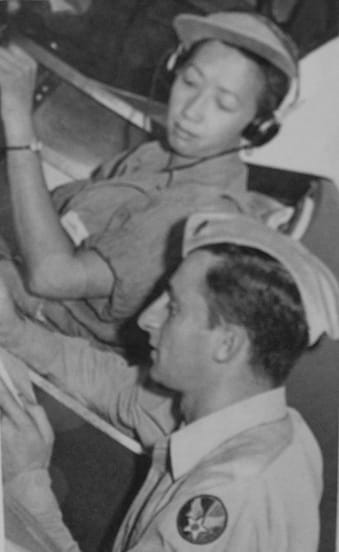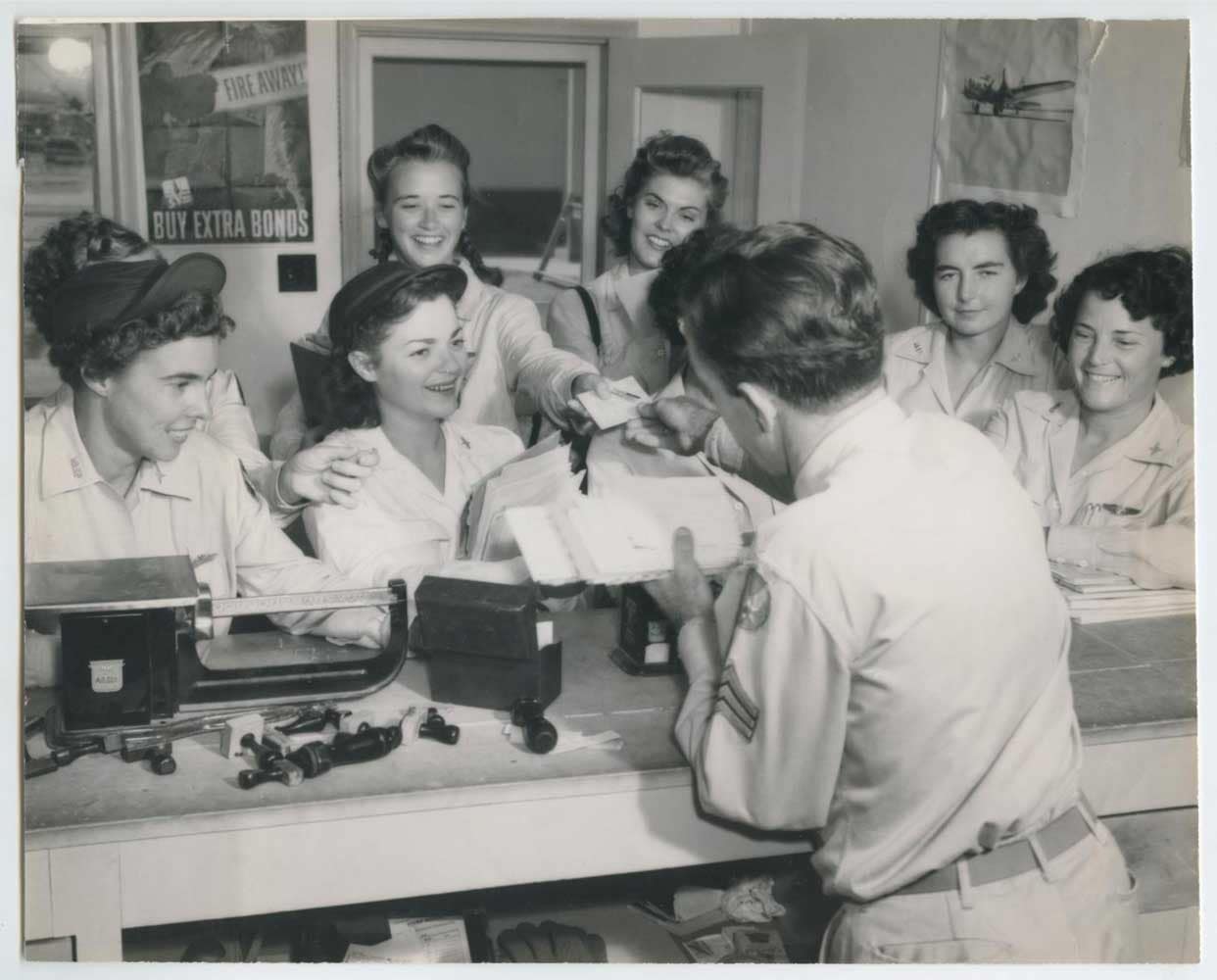
About a year ago I stopped at a going-out-of-business antiques shop. Among the items I found, along with a V-12 Allison engine operating pamphlet, were wartime issues of North American Aviation Inc.’s “Skyline” employee magazine. As you may know, North American manufactured three legendary WW2 aircraft: the AT-6 Texan advanced trainer (aka “the pilot maker”), the P-51 Mustang fighter, and the B-25 Mitchell bomber made famous by the Doolittle Raiders.

Yes, I took the magazines home. Yes, I need more aviation books and magazines, LOL!
Looking through the magazines I found that the September-October, 1943, issue has a full-cover, full-color photo of WASP gathered around a red-nosed AT-6 Texan. Inside is a nearly three-page feature article on the WASP titled: “Angels of Avenger Field.”

Author Lucile “Ticky” Poynor began her story thusly:
“The sun beating down from a cloudless sky sent glints of light flashing from the AT-6 combat trainer. The ship came in smooth as a dream, taxied to a stop, and out stepped an “angel,” shedding her man-made wings.
“She didn’t look much like an angel, though. She wore baggy-seated, outsized GI coveralls. Her face was tanned from the wind and sun. She had sun-grin lines around her eyes, but those eyes were filled with stars. She could fly. And that’s what she wanted most in the world.”
I don’t know about you, but that’s just about the best description of a WASP that I’ve ever read.

Poyner’s article describes the WASP training: “This girl and hundreds like her fill the skies over Avenger Field at Sweetwater, Texas, from dawn to dusk, with the roaring of their engines. They are student pilots at the Army Air Forces Training Command’s school for women pilots, the first and only military flying school for women.”
Poynor goes on to cover the history of the WASP program, the training syllabus from primary to basic to advanced flying, and daily life as a WASP.

“It’s no snap. It takes every minute of every day to study and fly, fly and study. But when the girls graduate into active service as civilian
noncombatant pilots for the Air Transport Command, they’re just as good pilots as the Training Command can make them…”

The article is surrounded by photos of the WASP and their airplanes at Avenger Field. Some of the WASP are identified. Some are not, but perhaps readers will recognize the others.
From the article: “Listening to the girls as they wait in the ready rooms near the flight line would make any North American employee proud of the planes he (and she) helps build….They’ve plenty to say about the Texan: It’s super…Smooth as silk…I’m starting in the 6, thank gosh…Like seventh heaven…Now I’m a hot pilot…’Cause that old instructor turned me loose in the 6.”

Upon graduation, many of the WASP went to North American’s factory in Dallas to deliver new AT-6s. Others were assigned to the California and Kansas divisions to deliver “sweetheart ship” Mustangs and Mitchells.
By the way, author Lucile “Ticky” Poynor (later Poynor-Smith) was perfect for writing an article about the WASP. Born in Waco and from Swinney Switch, Texas, she worked as a reporter for the Dallas Dispatch newspaper. In an August 1978 Dispatch column titled “The Rowdy Days of the Dallas Dispatch,” Al Harting wrote, “A few of the Dispatch’swomen reporters fit the career-girl image created by Rosalind Russell in His Girl Friday. Ticky Poyner was a small, pretty blonde who petrified strangers with her command of oilfield cusswords.”

Poynor later moved to Middletown, New Jersey, where she became editor of The Courier newspaper. At her passing in December 1998, the owner of The Courier said she was “one of the outstanding editors of any newspaper, daily or weekly.”
In addition to adding to the history of the WASP, Ticky wrote several articles for North American’s “Skyline” magazine.



Article written by Frederick Beseler
Photos courtesy of North American Skyline
About Frederick Beseler:
Frederick Beseler is retired after a nearly 40-year career in the commercial air conditioning industry as a technical, advertising, and marketing writer and editor. A pilot since 1978, Beseler has given numerous presentations and written many aviation- and civil war-related articles. He is a past president of EAA Chapter 307 in La Crosse, Wis., and served on the Board of Directors of the Wisconsin Aviation Hall of Fame. Fred recently gave a WASP presentation at the Richard I. Bong World War 2 Museum in Superior, Wisconsin, and is scheduled to give his WASP presentation at The Woman’s Club of Minneapolis on June 13, 2023.


